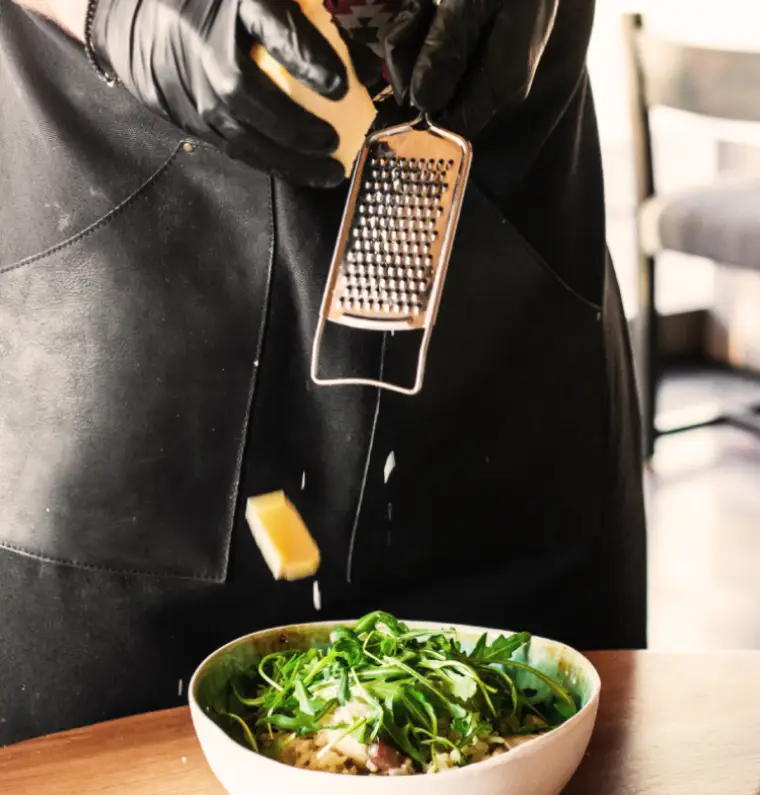
Cheif Name Surname
95%
1450

“Simplicity is the ultimate sophistication.”
Always fresh

Build WordPress sites with MaxiBlocks. All features free forever. No locked functionality. Optional Cloud Library saves you 10+ hours per project. Start free

Cheif Name Surname
95%
1450

Always fresh
Step into a refreshing visual world with our uniquely crafted layout. This design brilliantly ties together text and images to draw readers into a vibrant narrative. The page splits into two distinct parts: on the left, you’ll find a captivating image of someone grating delicious food next to a bowl of greens. On the right, explore related information and visually appealing graphics.
Organising your content with categories helps keep your WordPress website structure clean and intuitive. Assigning each post to a category allows readers to find related content effortlessly, enhancing the user experience. Categories can also support SEO efforts by clarifying website themes and topics, making the site more appealing to search engines.
Tags are more detailed than categories, describing the specifics of a post’s content. Implementing tags allows users to navigate related themes and topics across categories, offering versatile blog exploration. Including relevant tags also aids in search engine visibility, driving more traffic to your site.
Implementing logical navigation menus on your WordPress website ensures an effortless browsing experience. Menus can neatly guide users through pages like your about page, blog, or contact area. The use of submenus provides in-depth navigation for complex websites that house a wide array of content.
Internal links, such as from the WordPress website, connect content within your site, helping visitors discover related topics while boosting your SEO. Ensuring your internal links are relevant supports user experience and enhances page authority.
Including widgets in your layout, such as recent posts or comments, can effectively embed additional content while maintaining a tidy appearance. Widgets bring reader attention to key areas without constant page navigation, underscoring user engagement.
Going beyond the standard posts and pages, custom post types add a personalised touch to your site. Creating unique content formats such as portfolios, FAQs, or testimonials enables you to apply specific templates to specified materials.
Shortcodes simplify content insertion and functionality within posts or pages. Embedding visual elements or features becomes swift and manageable without diving into detailed coding. They’re perfect for adding complexity to your site efficiently.
A theme shapes the overall look and feel of your WordPress website. With creative free WordPress themes, you can achieve a distinct, eye-catching style that complements your content organisational needs.
Plugins add substantial enhancements to existing WordPress features. With plugins, incorporating aspects like SEO optimisation, speed improvements, or social sharing buttons becomes straightforward, further refining content organisation and user interaction.
Installing feedback sections on your WordPress website enriches content organisation by gathering reader input on site navigation and topic relevance. Constructive feedback cultivates a harmonious ongoing relationship with your audience, improving content engagement.
Blog posts are a primary content medium in WordPress, offering insights, tips, and personal experiences across a wide array of subjects. They foster conversation and engagement with readers through comments and shares, continually driving traffic to your site.
Image galleries showcase your work visually, enriching your blog or website with engaging content. They provide an excellent platform for photographers, designers, or artists to present portfolios or thematic compilations.
Videos add dynamic appeal to WordPress websites, accommodating engaging storytelling and demonstrations. Hosting videos enhances viewer interest and retention while facilitating rich explanation across complex topics.
Podcasts diversify your content offering by catering to auditory learners. Integrating audio content allows visitors to consume information on-the-go, broadening your outreach and offering a modern twist to conventional blogging.
Utilising WordPress for e-commerce involves product listings with descriptions, prices, and imagery. Creating an online store encourages sales through direct and straightforward navigation while expanding your business reach.
Tutorials or guides empower users with step-by-step instructions on various tasks or obtaining results. Particularly suited for skill-related content, they troubleshoot common issues and foster a helpful community atmosphere.
Static pages like ‘About’ or ‘Contact Us’ form the backbone of your website. They offer enduring information that isn’t subject to frequent change, ensuring visitors navigate key areas without getting lost in dynamic content updates.
Review postings cultivate a trustworthy environment by offering honest feedback on products, services, or experiences. They support consumer decision-making, increasing credibility and establishing blogger authority.
Infographics combine visuals with concise data presentation, effectively communicating complex information. Perfect for quickly conveying trends, research findings, or step-by-step instructions, they create a visually appealing learning experience.
Event listings and calendars organise upcoming activities, promoting participation in real-world or online gatherings. Automated reminders facilitate engagement and connectivity, strengthening community bonds.
Elevate your WordPress website builder with a blend of minimalism and originality. Whether you’re exploring new Elementor Alternatives or looking to add functionality with plugins, this versatile layout – boasting a strong visual hierarchy and effective whitespace usage – markedly boosts user engagement. Perfect for culinary or lifestyle-focused blogs, this design draws attention to your core messages while fostering interaction. Make an impact with your next post by embracing this stylish and functional WordPress website design!
